
Tungsten is a rare metal with high melting point, high hardness and corrosion resistance. It has important strategic value in modern industry, national defense, military, high-tech and other fields. In nature, there are more than 20 kinds of tungsten resources. However, only wolframite and scheelite are worth mining. So what is the difference between wolframite and scheelite, and what are the differences in mineral processing?
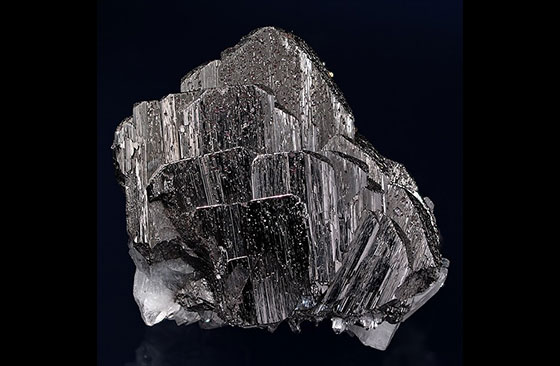
Wormite: It is mostly produced in high-temperature hydrothermal quartz veins. Its main components are ferrite (FeWO4) and manganese tungsten (MnWO4). There are two types of monoclinic and orthorhombic columnar crystal systems. Its crystal structure is plate-like or columnar, and the aggregate is mostly plate-like. In terms of color, wolframite will become darker with the increase of iron content. It is mostly brown-red to black, opaque, with metallic luster or semi-metallic luster. Its hardness is relatively high, 5-5.5, its specific gravity is 7.1-7.5, and it has weak magnetism.
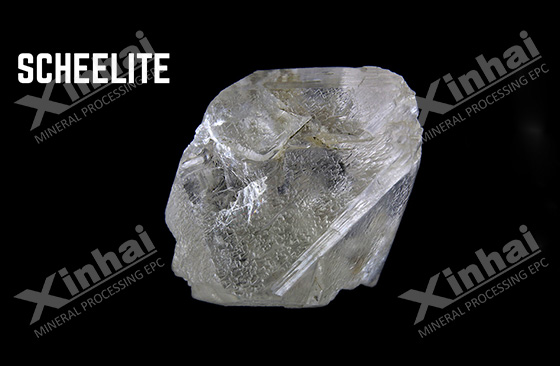
Scheelite: It is mainly produced in contact metasomatic deposits, high-temperature hydrothermal veins and greisen. Its main component is calcium tungstate (CaWO4), which belongs to the tetragonal system. The crystal is a tetragonal bipyramid close to an octahedron. The aggregates are mostly irregular granular, and less dense blocks. In terms of color, scheelite is mostly gray, light yellow, light purple or light brown, transparent to or transparent, with glass luster or diamond luster. The hardness is 4.5-5, the specific gravity is 5.9-6.2, and it is non-magnetic.
Due to the great differences in mineralization conditions, ore properties, hardness, specific gravity, crystal structure, etc. between wolframite and scheelite, there are also great differences in ore dressing between the two tungsten ores. Usually, wolframite is mainly processed by gravity separation due to its large specific gravity, while scheelite is mainly processed by flotation separation.
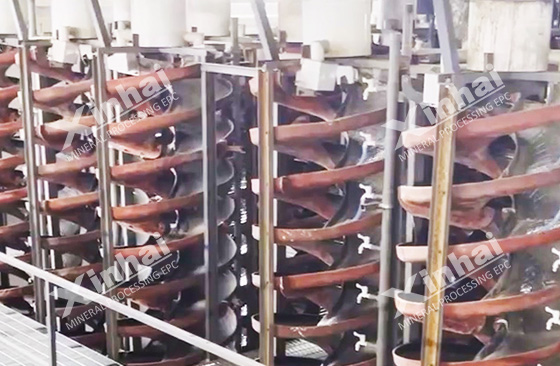
Wolframite beneficiation method
The commonly used wolframite gravity separation methods include jigging gravity separation, shaking table gravity separation, chute gravity separation and heavy medium gravity separation.
Jigging gravity separation: using the difference in density between wolframite and gangue minerals, under the action of vertical alternating water flow, the minerals are separated by density. When the water flow rises, the light minerals are washed up, while the wolframite particles with higher density remain at the bottom of the bed; when the water flow drops, the wolframite particles are subjected to a greater downward force and continue to remain at the bottom of the bed, while the light minerals are carried away by the water flow.
Shaking table gravity separation: It is to separate wolframite and gangue minerals by the difference in movement on the bed surface. Under the combined action of mechanical shaking and lateral water flow, the bed surface of the shaking table causes the minerals to be layered according to density and particle size. Wolframite particles with higher density move slowly on the bed surface and gradually gather at the concentrate end of the bed surface; while gangue minerals with lower density move faster and are carried to the tailings end by the water flow.
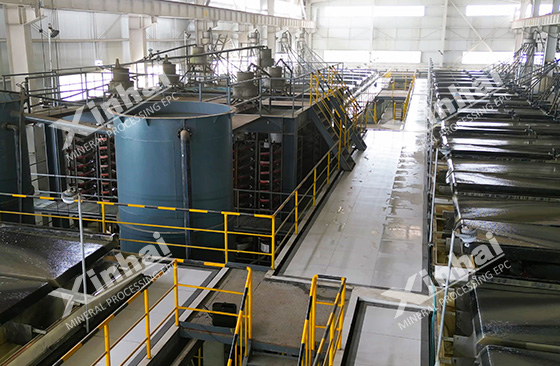
Chute gravity separation: It is to separate wolframite and gangue minerals by the difference in movement under the centrifugal force and gravity in the spiral chute. The cross-section of the spiral chute is parabolic. When the slurry flows in the spiral chute, the minerals are layered according to density and particle size due to the centrifugal force and gravity. Wolframite particles with higher density move on the outer edge of the spiral chute and gradually gather at the concentrate end of the chute; while gangue minerals with lower density move on the inner edge of the spiral chute and are carried to the tailings end by the water flow.
Heavy medium gravity separation: It is to separate wolframite and gangue minerals by using the difference between sinking and floating in heavy medium. Heavy medium generally uses solid particles or liquids with a density greater than water, such as ferrosilicon, magnetite powder, barite powder, etc. After the ore is mixed with the heavy medium, it is placed in the heavy medium separator. The wolframite particles with a density greater than the heavy medium sink, while the gangue minerals with a density less than the heavy medium float, thereby achieving separation.
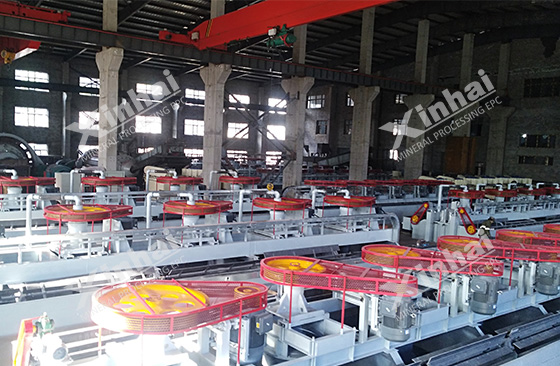
Scheelite beneficiation method
The commonly used methods for scheelite flotation are mainly fatty acid collector flotation, chelate collector flotation and cationic collector flotation.
Fatty acid collector flotation: By using fatty acid collectors (oleic acid, sodium oleate, etc.) to physically or chemically adsorb on the surface of scheelite in the pulp, the surface of scheelite is made hydrophobic, so that it can attach to bubbles and be floated out of the pulp.
Chelating collector flotation: Because it contains specific functional groups, it can form stable chelates with metal ions on the surface of scheelite, thereby making the surface of scheelite hydrophobic. Compared with fatty acid collectors, chelating collectors have higher selectivity and stronger collection capacity.
Cationic collector flotation: Under specific pulp conditions, cationic collectors can adsorb on the surface of scheelite, making the surface of scheelite positively charged and react with the surface of scheelite through electrostatic adsorption or ion exchange, changing the surface electrical properties of scheelite, thereby separating it from the negatively charged gangue minerals.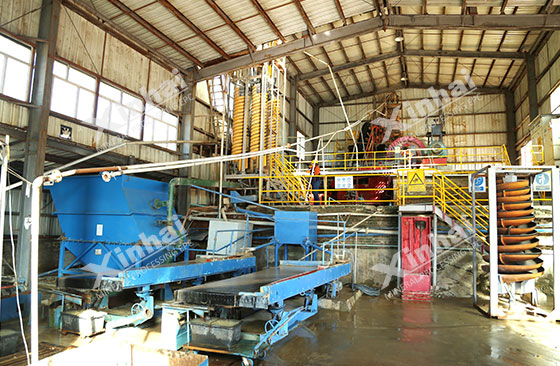
In summary, there are significant differences in mineral properties and beneficiation processes between wolframite and scheelite, and each has unique beneficiation advantages and technical requirements. Wolframite is mainly separated by gravity separation, taking advantage of its high density characteristics to achieve separation; while scheelite mostly uses flotation technology, relying on the selective adsorption of chemicals to achieve separation effects. The rational development and efficient utilization of the two tungsten ores can not only improve the comprehensive recovery rate of tungsten resources, but also be of great significance to promoting the sustainable development of the tungsten industry and meeting the needs of national defense and industry.
To find out more about our products and solutions, please fill out the form below and one of our experts will get back to you shortly.